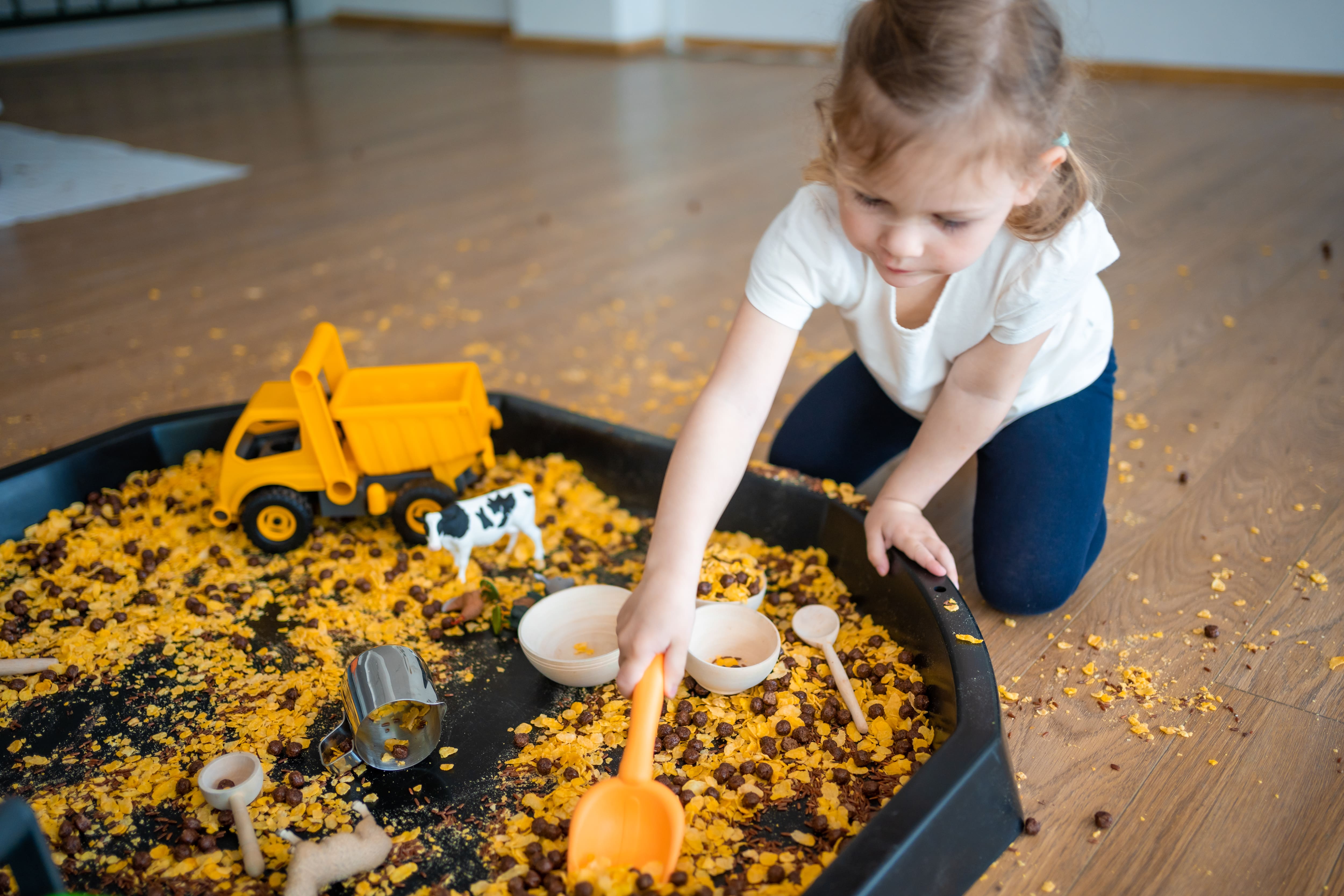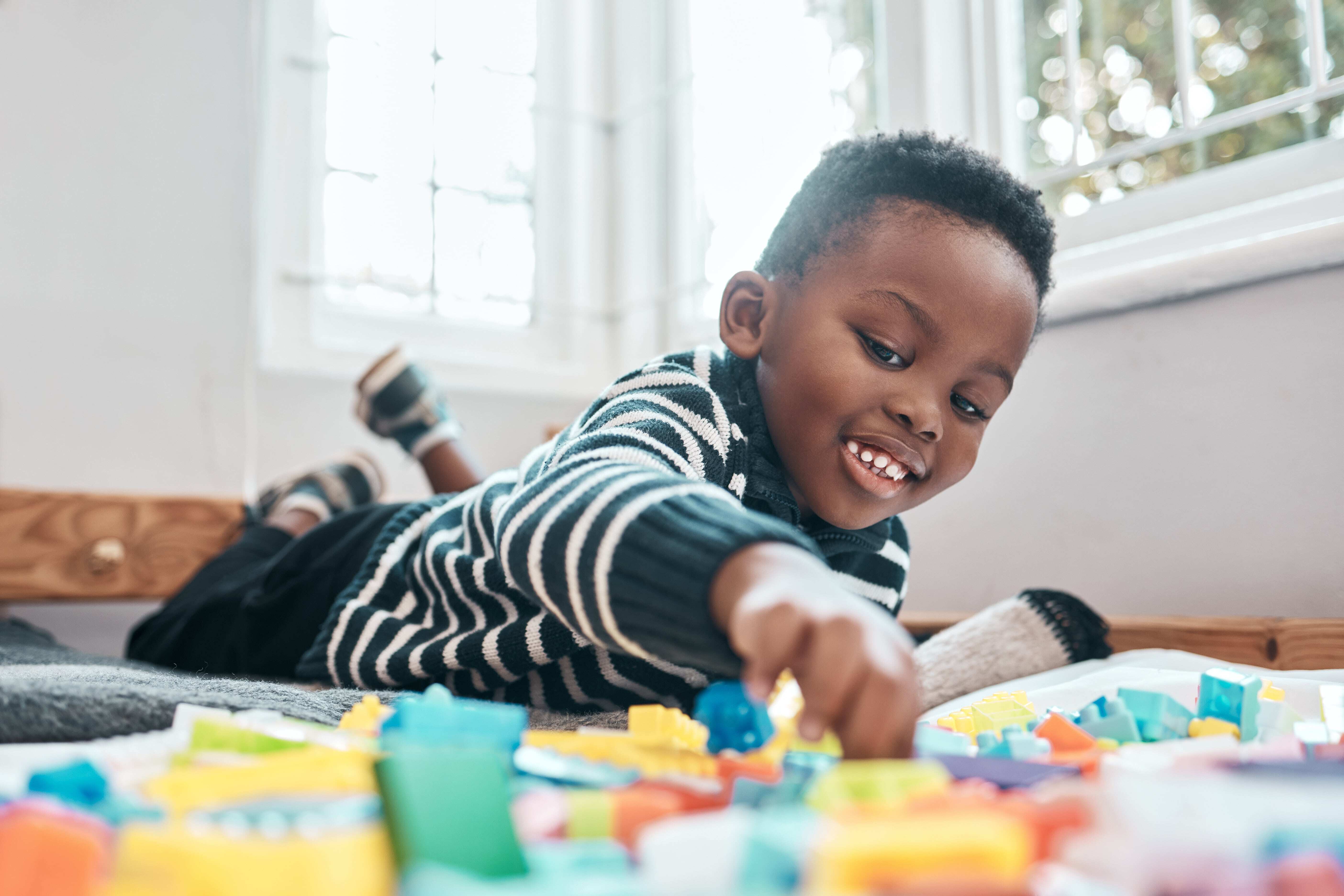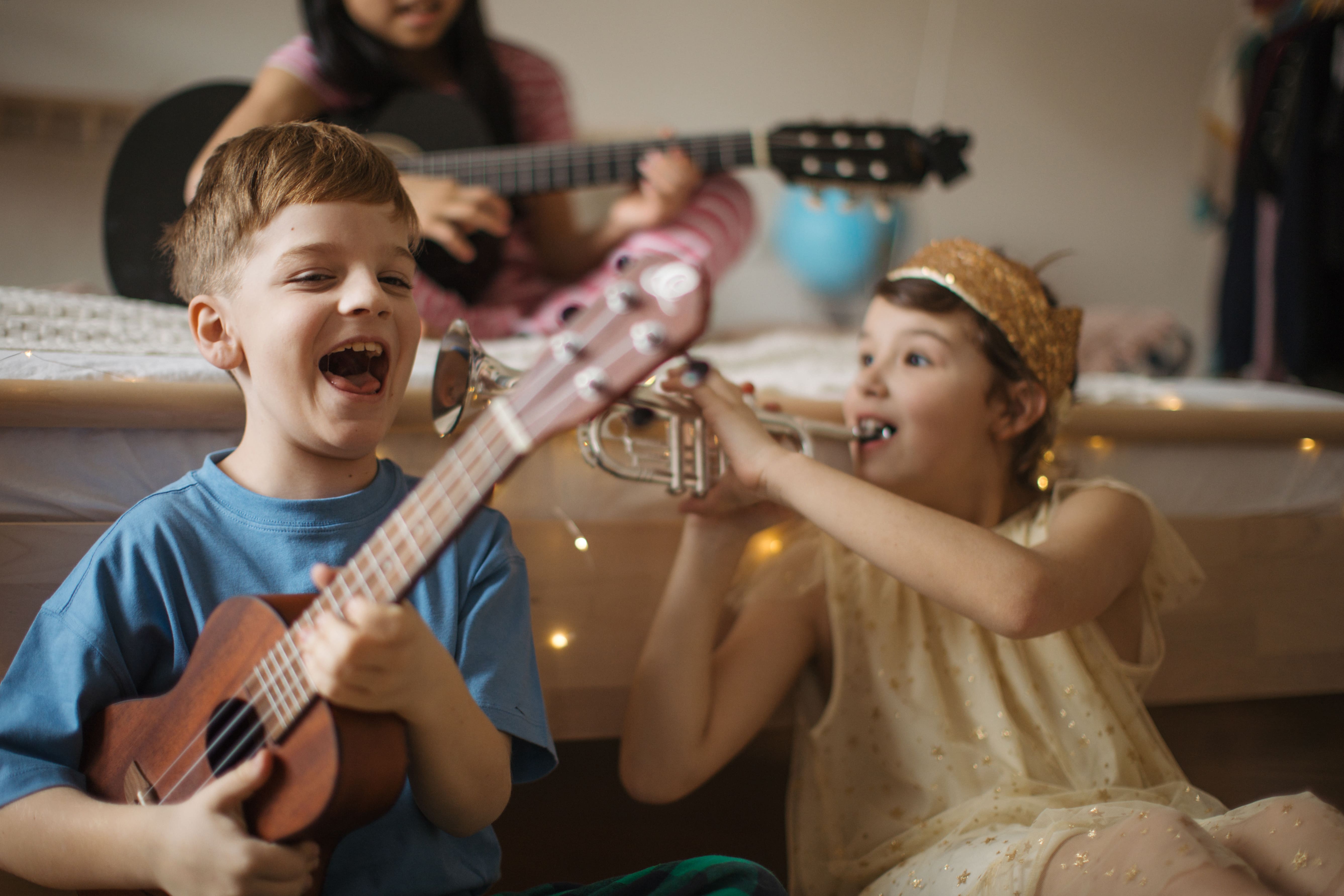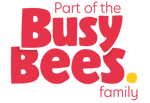Discover playful summer activities for infants and toddlers that build math, science, art and language skills naturally through fun, hands-on exploration.
Summer is full of opportunities for your infant or toddler to discover, create and grow. Learning during these sunny months can happen naturally through play, without ever feeling like school. With a few simple materials and plenty of curiosity, you can help your child build early skills in math, science, art and language. The ideas below are grouped by subject and include learning goals, so you can see how playful moments support your little one’s development.
Math Moments
Summer play is full of natural opportunities to introduce early math concepts in fun and meaningful ways. Infants and toddlers learn best through hands-on experiences that let them see, touch and explore numbers, shapes, patterns and sizes in their everyday world. By playing simple games that involve counting, sorting, measuring and recognizing shapes, you help your child build the foundation for problem-solving, reasoning and understanding quantity, all while they stay active and curious.
1. Water Pouring Station
Set up bowls, cups and spoons with water outside or in a shallow bin. Let your child scoop, pour and fill different containers, noticing how the water moves. Talk about full, empty, more and less.
Learning objective: Develop early measuring concepts, volume awareness and hand-eye coordination.
2. Nature Shape Hunt
Go for a walk and help your child look for shapes in nature. Point out round rocks, square sidewalk tiles or triangle leaves. Name the shapes together.
Learning objective: Recognize shapes in the environment and practice categorizing.
4. Big and Small Sorting
Place objects of different sizes (balls, blocks, spoons) in a bin. Encourage your toddler to group big and small items into separate piles.
Tip: if you have a beach trip planned, have your toddler collect shells you can use for this activity later!
Learning objective: Build understanding of size comparison and sorting by attributes.
5. Water Balloon Count and Toss
Fill a small set of water balloons (for example, 5 to 10) and place them in a bucket or bin. As your toddler takes out each balloon, count together out loud. Encourage them to toss each balloon at a target like a chalk-drawn circle, a large plastic bowl or a soft patch of grass. After each toss, count how many balloons are left. For older toddlers, you can introduce simple comparison: Which target got the most balloons?
Learning objective: Practice one-to-one counting, build understanding of quantity (how many used, how many left) and develop gross motor coordination through active play.
5. Snack Math
During snack time, count pieces of fruit, crackers or cereal together. Group them by type or colour and count as you eat.
Learning objective: Reinforce number concepts in meaningful daily moments.
Simple Summer Science
The natural world is full of wonders for your infant or toddler to explore, and summer provides the perfect backdrop for early science learning. Young children are natural scientists, they observe, experiment and test ideas through play. By encouraging curiosity and hands-on discovery, you help your child begin to understand cause and effect, changes in nature, and simple scientific concepts like floating and sinking, light and shadow, or colour mixing.
1. Ice Cream in a Bag
Make simple ice cream by mixing ½ cup of milk or cream, 1 teaspoon of sugar and ¼ teaspoon of vanilla extract in a small bag, placing it inside a larger bag with ice and ¼ cup salt, and shaking it together. Let your toddler feel how it changes from liquid to soft ice cream.
Learning objective: Explore temperature, states of matter and basic chemistry.
2. Shadow Play
On a sunny day, place toys on paper and trace their shadows. Watch how the shadows change shape and position as the sun moves.
Learning objective: Introduce concepts of light, shadow and the sun’s movement.
3. Sink or Float Water Bin
Fill a bin with water and provide safe objects like spoons, plastic lids or rubber toys. Ask your child which items sink or float and test together.
Learning objective: Build understanding of density, buoyancy and early prediction skills.
4. Bubble Science
Blow bubbles together using a store-bought or homemade solution (water, dish soap and a bit of sugar or corn syrup). Encourage your toddler to watch the bubbles float, notice their colours and shapes, and pop them with fingers or toes. Try blowing bubbles with different tools like straws, cookie cutters or pipe cleaners formed into loops.
Learning objective: Explore cause and effect, observe properties of air and liquid, and build visual tracking skills.
5. Colour Mixing with Water
Add drops of food colouring to clear cups of water and let your toddler stir or mix colours together. Talk about what happens when two colours combine.
Learning objective: Explore colour changes, cause and effect and early science concepts.
Creative Arts
Creative play allows infants and toddlers to express themselves, experiment with materials and explore the world using their senses. Art at this age is not about making perfect pictures but about the joyful process of discovery—squishing paint between fingers, watching colours blend, or feeling the texture of a leaf pressed onto paper. Through simple activities, children strengthen fine motor skills, learn about cause and effect, and build confidence as creators.
1. Squirt Gun Painting
Fill squirt guns or spray bottles with diluted washable paint. Tape large paper to a fence or wall and let your toddler spray and create colourful designs. Talk about colour choices and patterns they make.
Learning objective: Strengthen finger muscles, build hand-eye coordination and explore colour blending.
2. Sidewalk Chalk Murals
Provide chunky chalk and encourage your toddler to cover a section of pavement with shapes or scribbles. Draw with them and name colours or shapes as you go.
Tip: Put some painters tape on the ground in different geometric patterns, have your toddler name and colour in the shapes, lift the tape to reveal cool artwork!
Learning objective: Develop fine motor skills, shape recognition and pre-writing abilities.
3. Handprint Nature Art
Help your toddler make handprints with paint on paper, then turn them into trees, flowers or animals. Add natural materials like leaves or petals for decoration.
Learning objective: Promote sensory exploration, creative thinking and connections between art and nature.
4. Nature Paintbrushes
Go on a walk with your toddler and gather safe natural materials like pine needles, long grass, small leafy twigs or flower stems. Help your child bundle these together using elastic bands or tape to create simple “paintbrushes.” Dip the nature brushes into washable paint and let your toddler explore making patterns and textures on paper. Talk about the different marks each brush makes.
Learning objective: Encourage textures, creative expression and fine motor development while connecting art with nature.
5. Watercolour Drip Art
Tape thick paper to a wall or fence. Give your toddler watered-down paint and a spoon or pipette. Let them drip the paint at the top and watch it run down, creating streaks and mixing colours.
Learning objective: Support cause-and-effect thinking, colour exploration and early science concepts through art.
Literacy and Language Through Play
Language development begins long before a child says their first word. Every sound your infant makes, every gesture, and every shared story builds the foundation for communication and a lifelong love of language. Through playful interactions, toddlers learn new words, practice listening, and begin to understand how sounds, symbols and stories connect to the world around them.
1. Sidewalk Story Path
Draw symbols, shapes or letters in a path along the sidewalk. Tell a story together as your child walks the path, using each symbol as a part of the tale.
Learning objective: Encourage storytelling, vocabulary growth and symbolic thinking.
2. Echo Songs
Sing favourite songs or rhymes outdoors, pausing for your toddler to echo the last word or phrase. Let them take turns leading the echo.
Learning objective: Build listening skills, memory and speech sound awareness.
3. Outdoor Story Tent
Set up a simple tent, fort or blanket canopy outside. Gather a few favourite stuffed animals, dolls or toy figures and invite your toddler to bring them inside the tent for “story time.” Together, make up a simple adventure about where the toys are going or what they see. You can act out parts of the story with the toys or encourage your child to add sound effects or movements.
Learning objective: Encourage storytelling, build expressive language and support imaginative play through shared narratives.
4. Letter Splash Game
Write large letters or simple words using sidewalk chalk on a fence, driveway or patio stones. Give your toddler a bucket of water and a sponge or small water balloon. Call out a letter or word and encourage your toddler to find it and splash it with water. For younger toddlers, you can focus on the first letter of their name or favourite shapes.
Learning objective: Support letter recognition, build listening comprehension and strengthen vocabulary through active, hands-on play.
5. Sidewalk Chalk Writing and Tracing
Write large letters on the ground with chalk. Invite your toddler to trace over them with a wet brush or another colour of chalk. Point out the letter names and sounds as you go.
Learning objective: Practice letter recognition, pre-writing strokes and fine motor control.
By weaving simple, playful activities into your summer days, you give your infant or toddler rich learning experiences without pressure or structure that feels like school. Follow your child’s lead, stay flexible and enjoy the process. The true goal is joyful discovery and connection.
Stay in the know and check us out on social media! Follow BrightPath on Facebook and Instagram for a variety of fun activities and daily inspiration.







